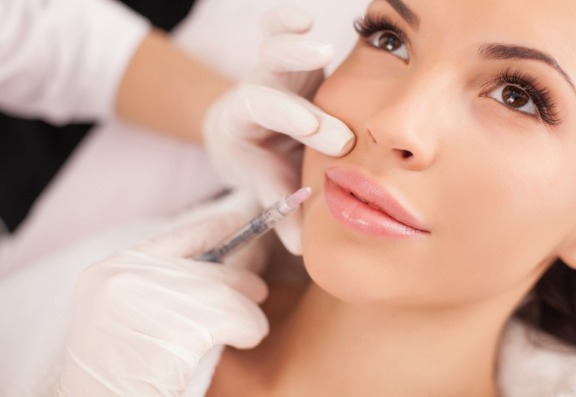Botox® is a wonderful drug that can really help people to look younger. But it is important to have an honest discussion with your client to make sure that their expectations and your treatment objectives are in line. Often times I will come across clients who feel that their previous experience with Botox was too heavy-handed, leaving them with a fixed, frozen and totally unnatural expression, or sometimes a droopy brow which interferes with their vision.
I will explain to my clients that I like to give Botox in a dose that will soften their lines and wrinkles but at the same time retain a degree of facial expression. This means a more youthful look but it still retains the natural balance and harmony of the face. While some clients do want the ‘frozen’ forehead look, they are in the minority and most would rather avoid this.
How much Botox is too much?
Choosing the correct dose for a particular patient is not as straightforward as your Botox course tutor might have you think.
Although some of the Botulinum Toxin manufacturers do provide dosage recommendations, these should be used as a guideline rather than a one-size fits all formula.
If you go down this road you will find that your customers will look for a more bespoke service elsewhere.

How much Botox is too much?
So how do you work out the correct dose? It requires a deep understanding of the anatomy and function of the facial anatomy, and an appreciation that everyone is different. So when I see a new patient who is thinking about Botox treatment I will carefully evaluate that persons facial musculature.
I will look at the strength of their musculature by examining their muscle bulk. I will determine the anatomy of their muscles, which is often different from the description in textbooks. I will determine the impact of relaxing those muscles, particularly the frontalis and orbicularis oculi muscles.
In considering the impact I am thinking not only about the aesthetics but also what will happen to the visual function of my patient once their brow is relaxed. They are not going to be best pleased if you paralyze their brow muscles which they are using to keep their heavy upper eyelids elevated and out of the field of their vision
Some areas of Botox treatment are also more difficult to get right than others. In this context, I am thinking particularly about Botox treatment for fine lines around the lips. In this area, one has to be particularly respectful of the power of Botox and tread very cautiously as overdosage can lead to lip incontinence that can last for several months.

Author: Dr Mark Aszkenasy
Dr Mark has been providing aesthetic beauty treatments since 2011. He is a consultant in the National Health Service and has the diploma of the membership of the Royal College of Physicians.
He has been practising aesthetic beauty medicine since 2011. He has seen and continues to see many clients affected by skin problems that have the potential to be helped by a good skincare regime. But these problems can only be helped if the skincare products actually have the necessary strength to do the job. Many clients use a skincare regime that is either too basic or too complicated to work, using products, often very expensive, with weak or unproven ingredients.
Dr Mark saw the need for a simple and effective range of skincare treatments, containing ingredients at a strength that could achieve results, and launched the Dr Mark Skincare range.
The philosophy of the range is simple – use only the highest quality products that contain clinically proven and effective ingredients at strengths that studies have shown to work in real people.
To view more blogs by Dr Mark Aszkenasy please click here.
